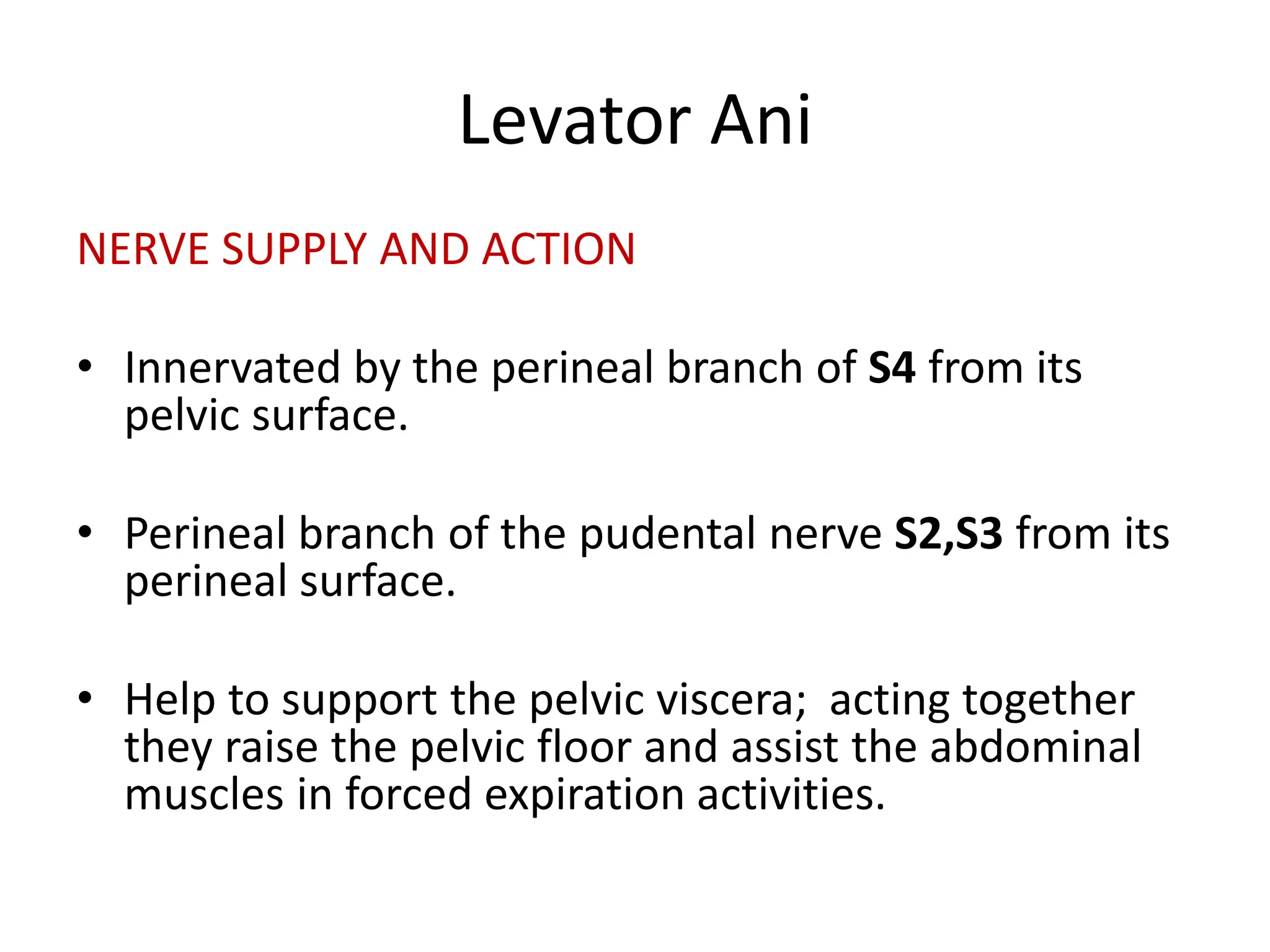The document discusses the anatomy and clinical aspects of the pelvic diaphragm and related structures. It provides detailed descriptions of the pelvic diaphragm muscles including the levator ani and coccygeus. It describes the pelvic fascia, peritoneum, nerves and blood supply of the pelvis. The document also provides an overview of the ureter including its course, relations, blood supply and innervation. It concludes with a section on clinical anatomy of megaureter which describes the classification, pathophysiology, diagnosis and management approaches.







































































